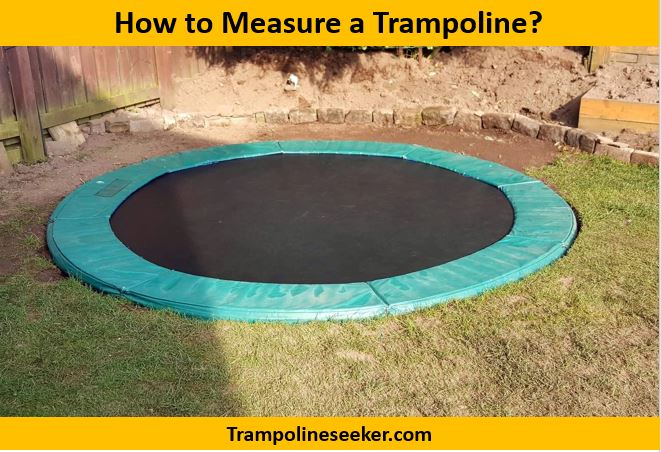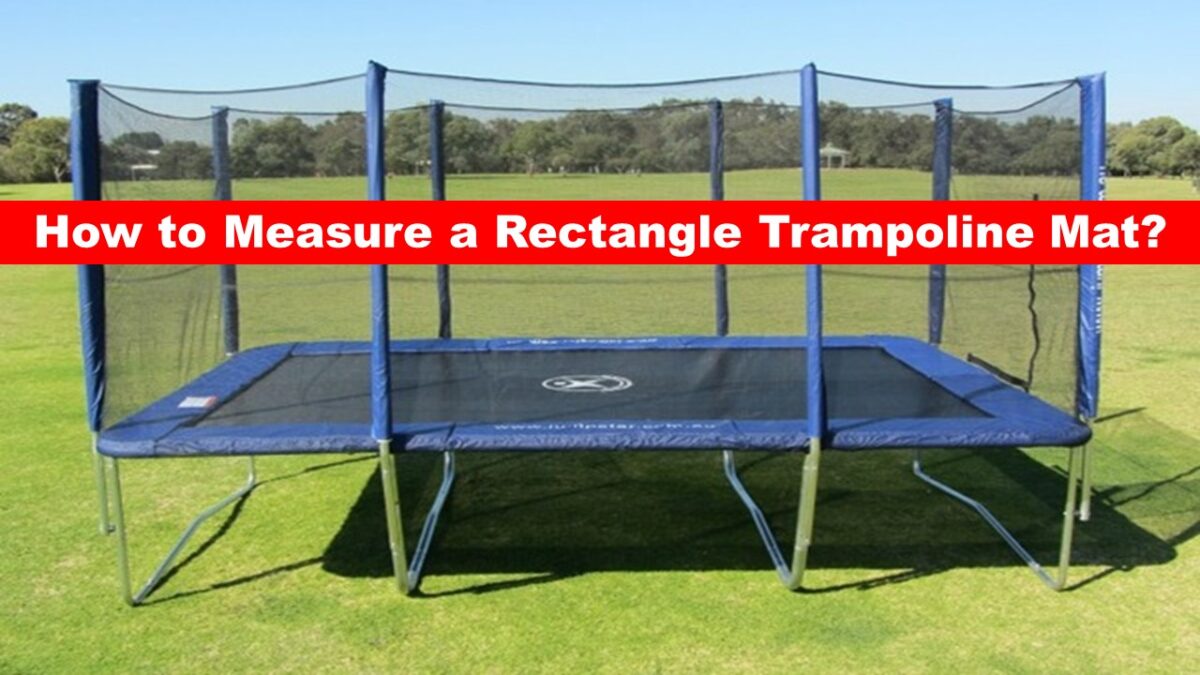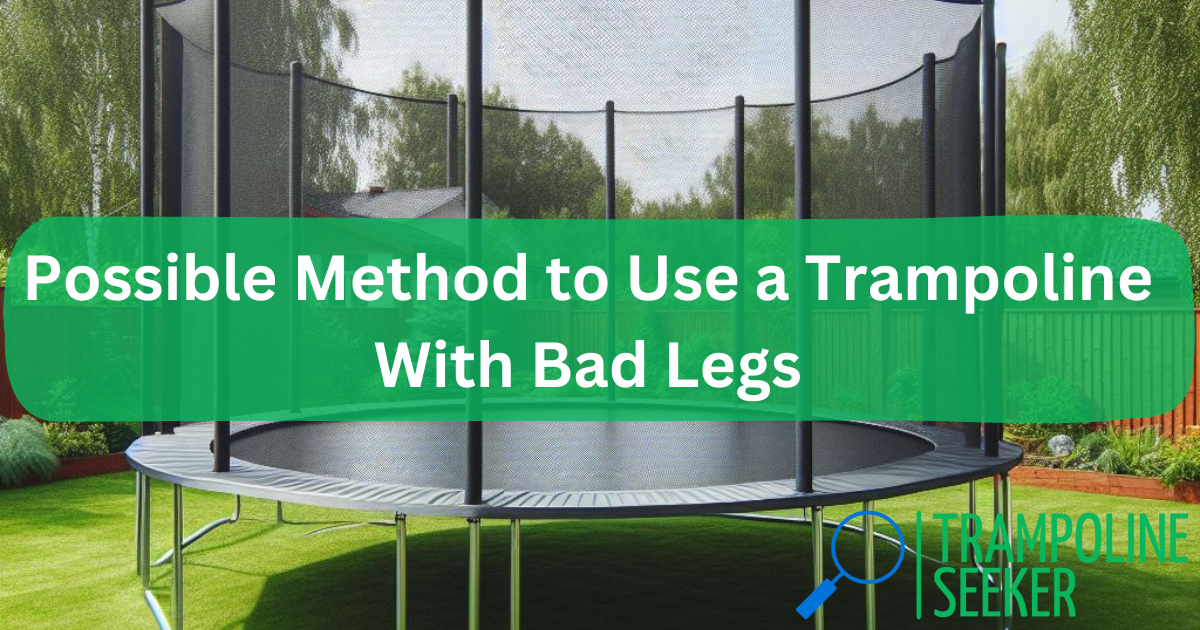Have you ever had the experience of neck pain after jumping on a trampoline? If yes, you’re probably wondering – why does my neck hurt after jumping on a trampoline? Well, you’re not alone. Neck pain is a common trampoline injury that can occur due to various reasons.
Based on my analysis, here is a quick overview of the most common reasons why your neck may hurt after jumping on a trampoline:
- Muscle strain from repetitive motion
- Attempting dangerous flips/stunts
- Landing awkwardly on your neck or shoulders
- Pinched nerve in the neck
- Pre-existing neck conditions getting aggravated
- Poor posture while jumping
- Not warming up properly
The good news is that while trampoline neck pain can be worrying, it is rarely serious if addressed promptly. In most cases, home remedies, over-the-counter pain medication, rest, and physical therapy help alleviate the discomfort within a few days or weeks.
However, you must take precautions to prevent recurrent injury whenever you jump on the trampoline. Read on to learn more!
🚑 Understanding Why Your Neck Hurts After Jumping On A Trampoline

Before going into the specifics, it is important to understand what makes our neck so vulnerable to injury while jumping on a trampoline.
Our neck muscles and ligaments need to support and balance the heavy weight of our head during those bouncy, uplifting movements. When we jump, our head moves rapidly up and down, requiring our neck to stabilize it.
If our muscles are not conditioned for this repetitive motion, it can overstretch them, causing microscopic tears and inflammation i.e. neck pain. Sometimes, poor landing positions wrench our neck ligaments beyond their limits.
Let’s analyze the common reasons behind post-trampoline neck pain and soreness.
💪 Muscle Strain From Repetitive Bouncing Motion
Repetitive bouncing and landing wrongly can strain the muscles and tendons in your neck and upper back. As I mentioned earlier, when you jump, your neck has to repeatedly stabilize around 10 pounds of weight from your head bobbing up and down!
This excessive stretching can cause muscle tears and inflammation, especially if you haven’t conditioned your muscles properly. Such repetitive muscle strain leads to post-exercise pain that intensifies when you move your neck or shoulders.
Application of ice packs, OTC pain medication, massage, and resting your neck for a couple of days usually helps ease this discomfort. However, severely strained muscles may require longer recovery.
🤸 Attempting Risky Somersaults And Flips
Trying flips, twists or somersaults without proper training is one of the most common ways trampoline jumpers injure their necks.
These advanced gymnastic moves require tremendous skill and body control to land safely. If you land awkwardly, the impact could jolt your neck backwards or sideways, spraining the muscles and ligaments. In worst cases, people can fracture a vertebra and injure their spinal cord.
I strongly advise against attempting risky aerial tricks on a recreational trampoline without expert supervision. Play it safe by focusing on basic vertical jumps until you build enough conditioning and skill.
😵 Landing Badly On Your Neck Or Shoulders
Even if you stick to simple vertical jumps, accidents can happen. You may lose balance midair and land badly on your back, neck or shoulders.
The sudden impact could whip your neck forwards, backwards or sideways, beyond its normal range of motion. This violent motion tears muscle fibers and strains the ligaments around spinal vertebrae.
Depending on severity, symptoms include intense local pain, stiffness, headache, nausea, tingling or numbness in arms. Seek medical help if you experience loss of movement or neurological symptoms after a bad fall.
🧠 Pinched Nerve In The Neck
The spinal cord and nerves pass through the narrow bony tunnels in our neck before branching out into the arms.
Jumping on the trampoline subjects these delicate structures to repetitive compression forces. It can pinch the nerve roots or compress the discs between vertebrae. This is medically termed as a ‘cervical radiculopathy’.
You’ll feel sharp neck pain radiating towards your shoulders and arms. Other symptoms include numbness, pins and needles sensation in the arm/ hand, reduced sensation, reduced reflexes and weakness in the arm/ hand muscles. Consult an orthopedic doctor promptly if you develop such nerve compression symptoms.
🦻 Aggravation Of Preexisting Neck Problems
Underlying degenerative conditions like arthritis, old whiplash injuries, congenital spinal issues etc. make your neck more prone to new damage. The rapid up-and-down bouncing movement subjects your already vulnerable neck to further strain.
If you have a past history of neck problems, jumping on the trampoline could irritate the injured structures and cause severe pain episodes. You are also more likely to develop complications like pinched nerves, disc herniations, or even fractures after minor trauma.
So I would advise refraining from trampoline activity if you have any preexisting neck ailments. Consult your physician before taking the risk. They may recommend additional precautions or exercises to strengthen your neck before jumping.
🧍 Poor Neck Posture And Alignment
Maintaining proper posture and balance is crucial when jumping on a trampoline. But often we are so focused on having fun that we overlook flaws in technique.
Hunching forwards or flinging head backwards during take-off and landing puts abnormal strain on the neck. This makes the muscles stiffen up painfully afterwards. Uneven bouncing may also cause misalignment between vertebrae, pinching nerves.
Be mindful to avoid slouching or arching your neck too far. Keep head centered above your torso, spine erect and body balanced evenly when jumping. This will minimize injury risk significantly.
🥾 Inadequate Warm-Up And Stretching
Just like any strenuous physical activity, safe trampoline jumping requires warming up muscles beforehand. When muscles are cold and tight, they are more injury-prone.
The rapid bouncing movement subjects stiff neck muscles to overstretching beyond capacity – muscle tears and inflammation. Gentle movements prepare muscles for subsequent activity by increasing blood flow and oxygen supply.
So always remember to warm up for 5-10 minutes before jumping frenzy. Do light cardio or jump slowly to get muscles heated up. Also stretch neck, back and legs gently. This simple habit goes a long way in preventing painful muscle strain.
🙊 Signs Your Neck Pain Is Serious
Mild-moderate muscle soreness, stiffness and pain are commonly experienced after trampoline activity. They usually resolve on their own. But prompt medical care is vital if you have signs of serious neck injury like:
- Loss of neck movement, inability to turn head
- Tingling, weakness or loss of sensation in arms / legs
- Loss of bladder / bowel control
- Bleeding or fluid leakage from nose / ears
- Blacking out, memory loss, confusion or seizures
- Worsening headache
- Fever
The above indicate possible vertebral fracture, spinal cord injury, ruptured disc, bleeding etc. which require ER evaluation.
While waiting for medical care, gently stabilize head-neck in neutral position and avoid moving it.
🩹 Treating Neck Pain After Jumping On Trampoline
Here are some quick remedies and treatment options for managing trampoline-related neck pain:
🧊 Apply Ice Packs
Applying ice packs or cold gel packs to the sore area constricts blood vessels, reduces inflammation and provides soothing relief. Do it for 10-15 minutes few times a day, especially after activity.
💊 Over-The-Counter Pain Medications
Anti-inflammatory pills like ibuprofen, naproxen or acetaminophen can alleviate swelling and discomfort associated with muscle soreness. Follow dosage instructions carefully.
✅ Gentle Stretches
Light neck stretches alleviate muscle tension. But avoid overstretching injured area. Stop if you feel sharp pain.
🧖♀️ Warm Showers
The heat from warm water loosens up tight injured muscles and improves blood circulation, reducing pain.
💆♂️ Massages
Gentle neck and shoulder massages promote blood flow and help injured muscles relax. Use smooth strokes directed away from spine to avoid further irritation.
🧑⚕️ Physiotherapy
Your doctor may prescribe physiotherapy involving hot packs, ultrasound, gentle joint mobilization and exercises to rehabilitate strained neck structures under expert supervision.
😴 Rest
Take ample rest from trampoline activity till pain resolves completely. Premature return could worsen injury.
🤸♂️ Strengthen Neck Muscles
Do targeted exercises later on to improve neck muscle strength and endurance so they can better handle trampoline stress.
🦸 How To Prevent Neck Injuries When Jumping On Trampolines

You can avoid recurring episodes of painful neck injury by taking simple precautions:
👥 Supervise Kids
Children are especially prone to accidents and injuries. Closely supervise them when jumping; intervene if they attempt risky flips/twists.
🤾♂️ Avoid Somersaults
Landing wrongly from aerial tricks commonly causes neck trauma. Stick to simple vertical jumps unless trained.
⛑ Wear Protective Gear
Use neck braces, helmets, elbow/ knee pads to cushion impact if you fall badly.
🧘♀️ Warm-up And Stretch
Gentle warm-up conditioning prepares muscles for activity and prevents strain.
🏋️ Strengthen Neck Muscles
Regular neck muscle strengthening boosts injury resilience.
🏠 Set Up Trampoline Safely
Ensure adequate overhead clearance. Anchor it securely. Keep surface clear of debris. Install protective netting and pads.
Regular inspection and maintenance checks ensure safety. Discard damaged trampolines promptly.
🧍 Maintain Proper Form
Avoid arching neck too far. Keep back straight, head aligned over body and land with control.
🏃 Pace Yourself
Start slow and low. Progress gradually than abruptly overexerting yourself. Take breaks.
🚫 Avoid When Fatigued
Tired muscles are inefficient shock absorbers and more prone to injury. Stop when exhausted.
🛡 Seek Medical Guidance
Discuss trampoline safety with your doctor if you have preexisting neck problems. Follow their tailored prevention instructions.
Frequently Asked Questions About Trampoline Neck Pain
Here are some additional common trampoline neck injury concerns answered:
💢 How long does trampoline neck pain last?
If it’s mild muscle soreness, it usually resolves within few days with self-care. Severe muscle sprains may persist couple weeks. Disc injuries, fractures take months. Seek medical advice if pain worsens or doesn’t improve in 2 weeks.
🤕 Can you break your neck on a trampoline?
Yes, it is definitely possible to fracture neck vertebrae if you land extremely badly from a risky, uncontrolled somersault. Such fractures cause spinal cord injury which can paralyze arms/ legs. So avoid aerial flips without training.
😣 Why do I have sore neck after jumping on trampoline?
Repetitive muscle overstretching from rapid bounce movements commonly causes microscopic tears, inflammation – leading to sore, stiff necks. Falling badly or pinching nerves also provokes soreness.
😰 Can trampolines cause brain damage?
Yes, traumatic head/ brain injury is possible if you land directly on your head after a risky flip gone wrong. Can cause concussion, internal bleeding, skull fracture. But with supervision, safety gear and avoiding flips, the risk is low.
Final Words
I hope the detailed insights above have helped answer why your neck hurts after jumping on the trampoline. While neck strain is common, you can avoid recurrent injury by using the correct precautions and techniques.
If pain persists beyond few weeks despite self-care, consult your doctor to rule out serious injury. Physiotherapy and imaging tests may be needed to detect any pinched nerves, fractures or instability.
Stay safe and have fun jumping! Let me know if you have any other trampoline safety queries.
My Blogs You May Like to Read:













